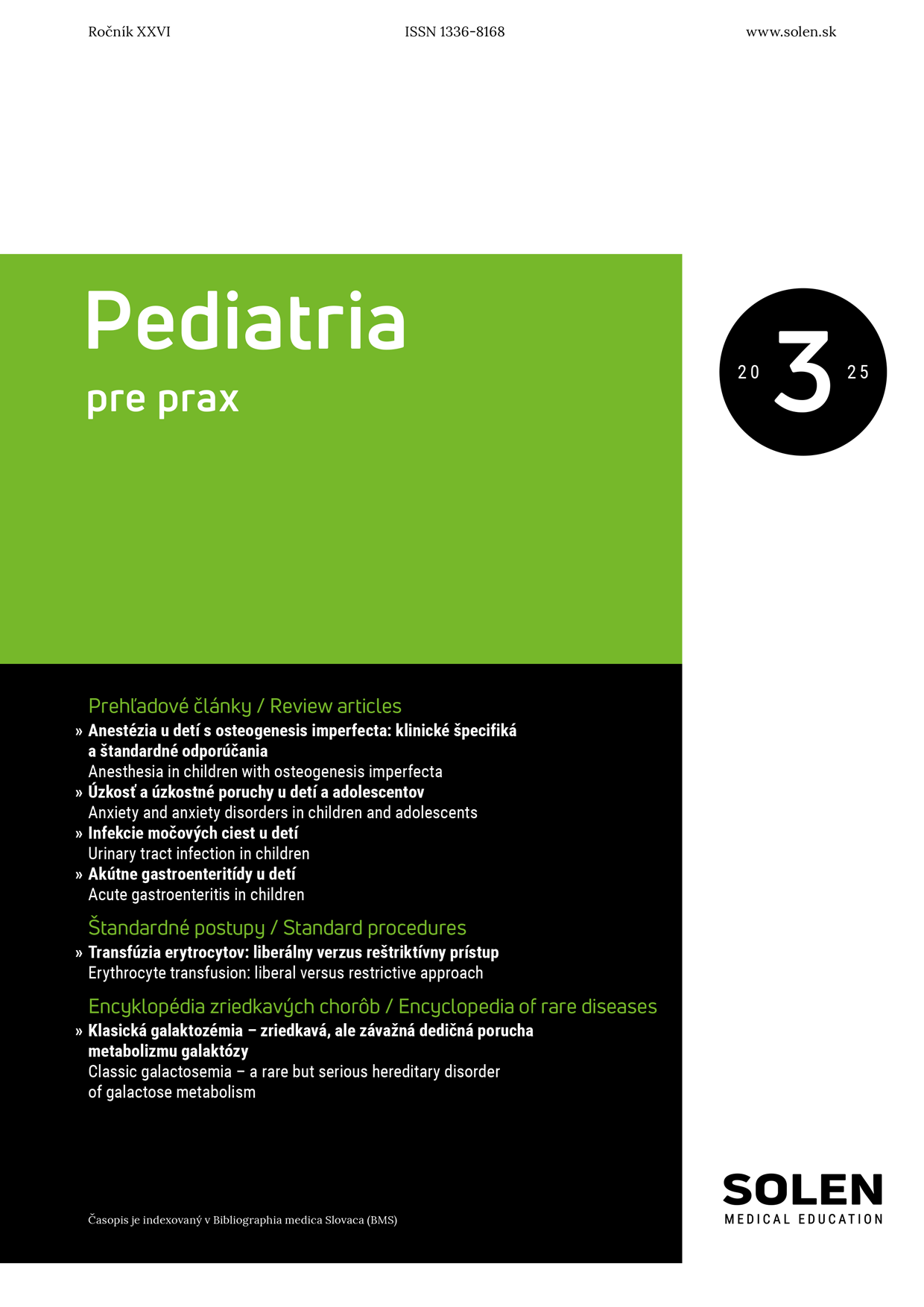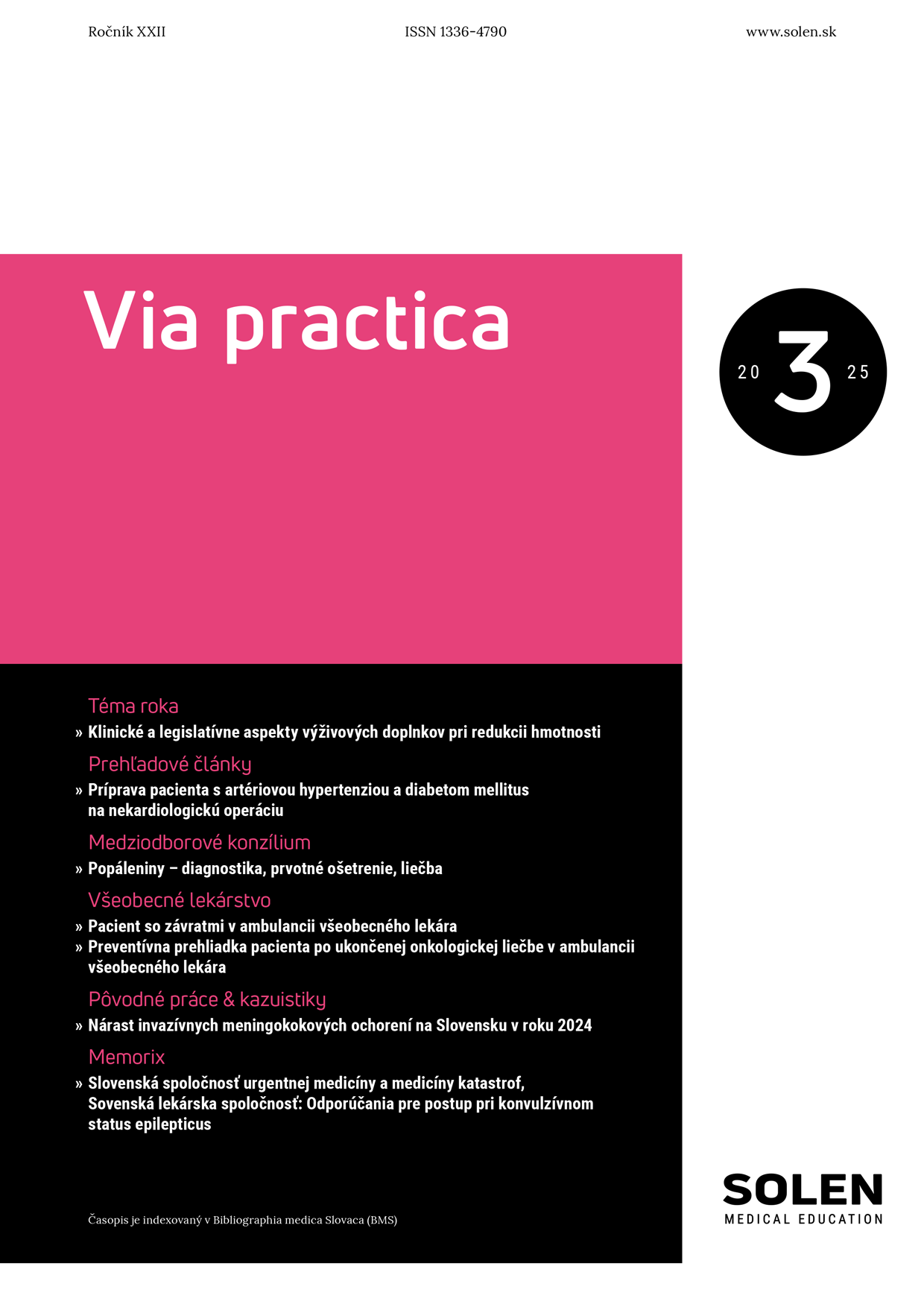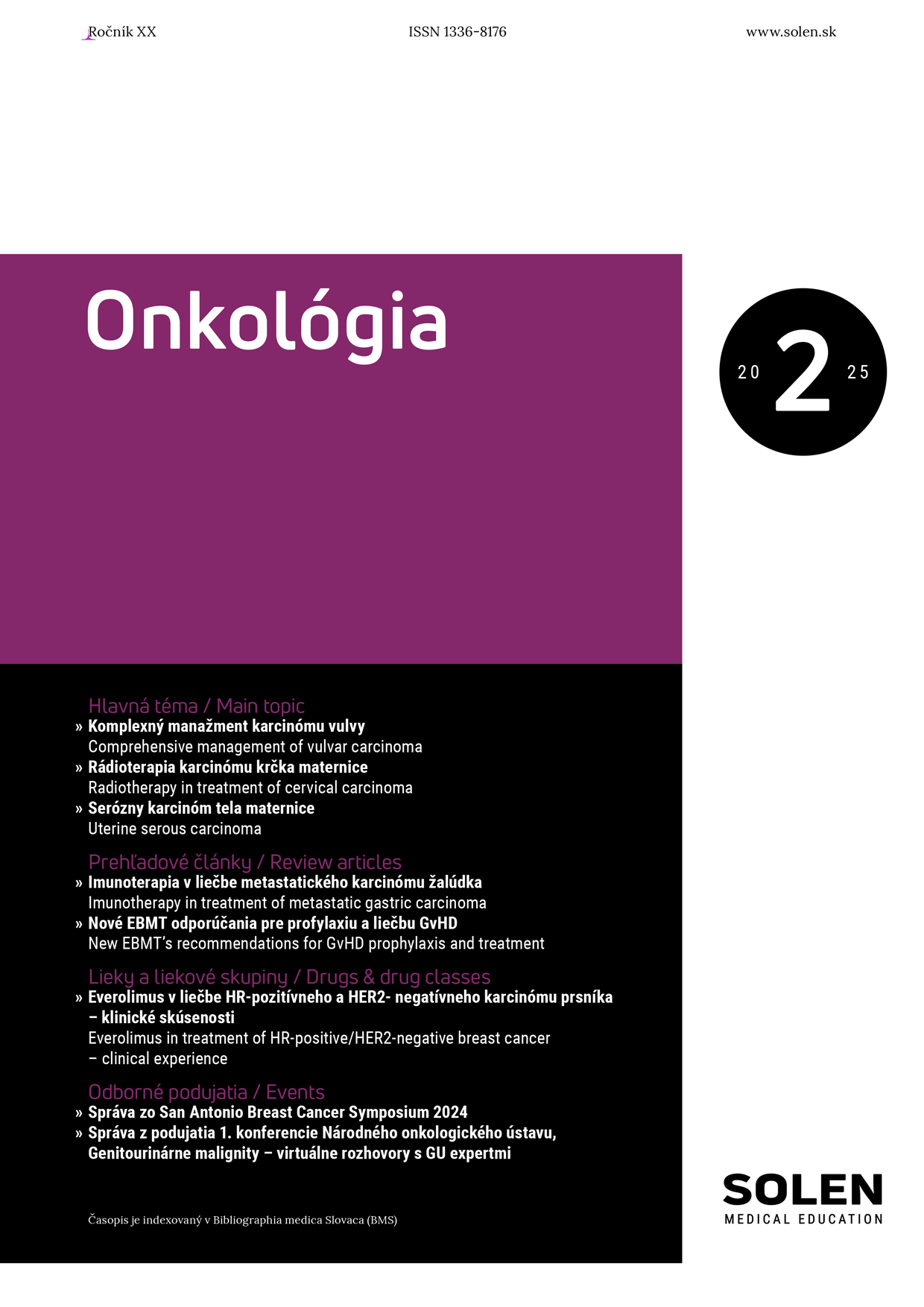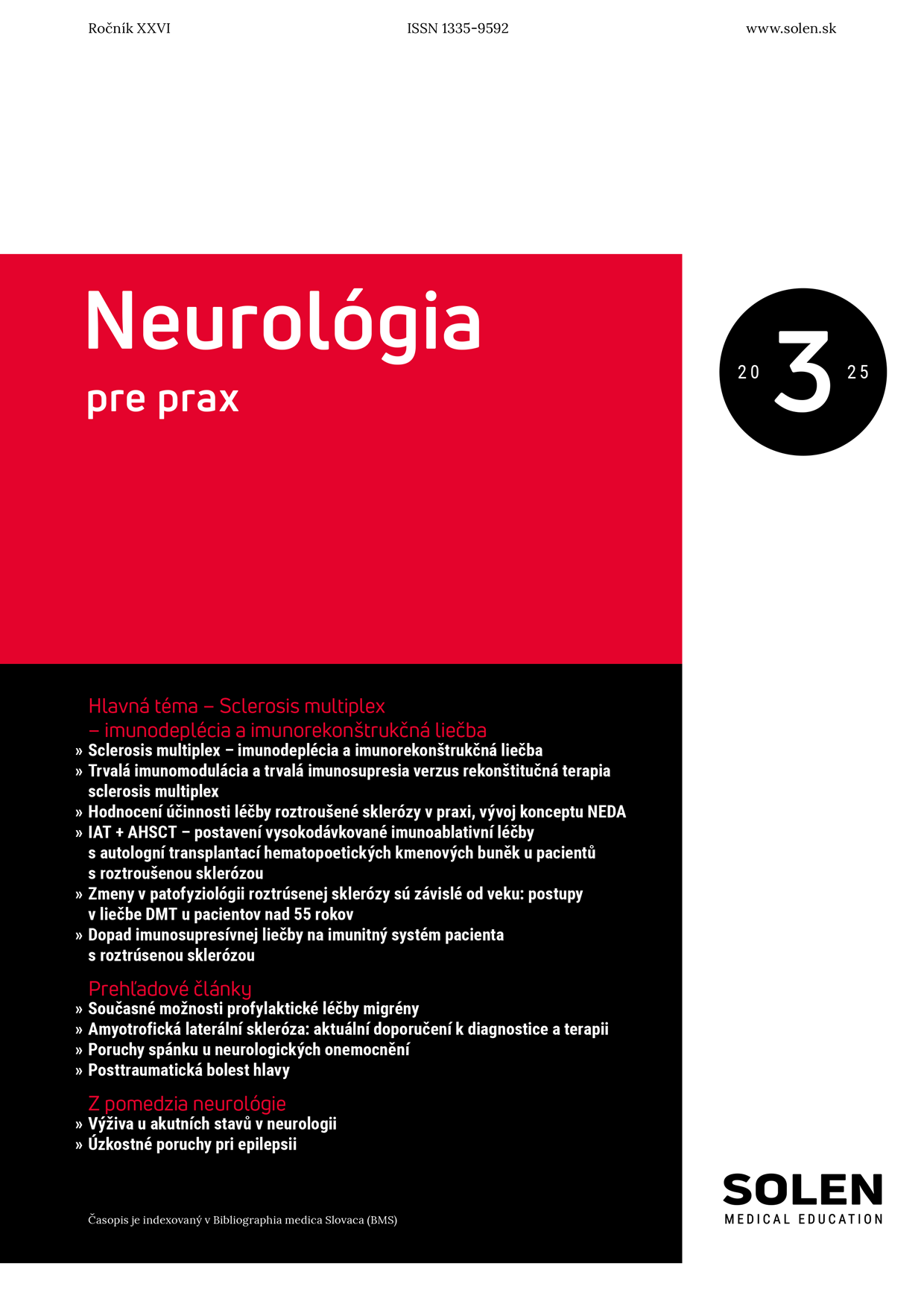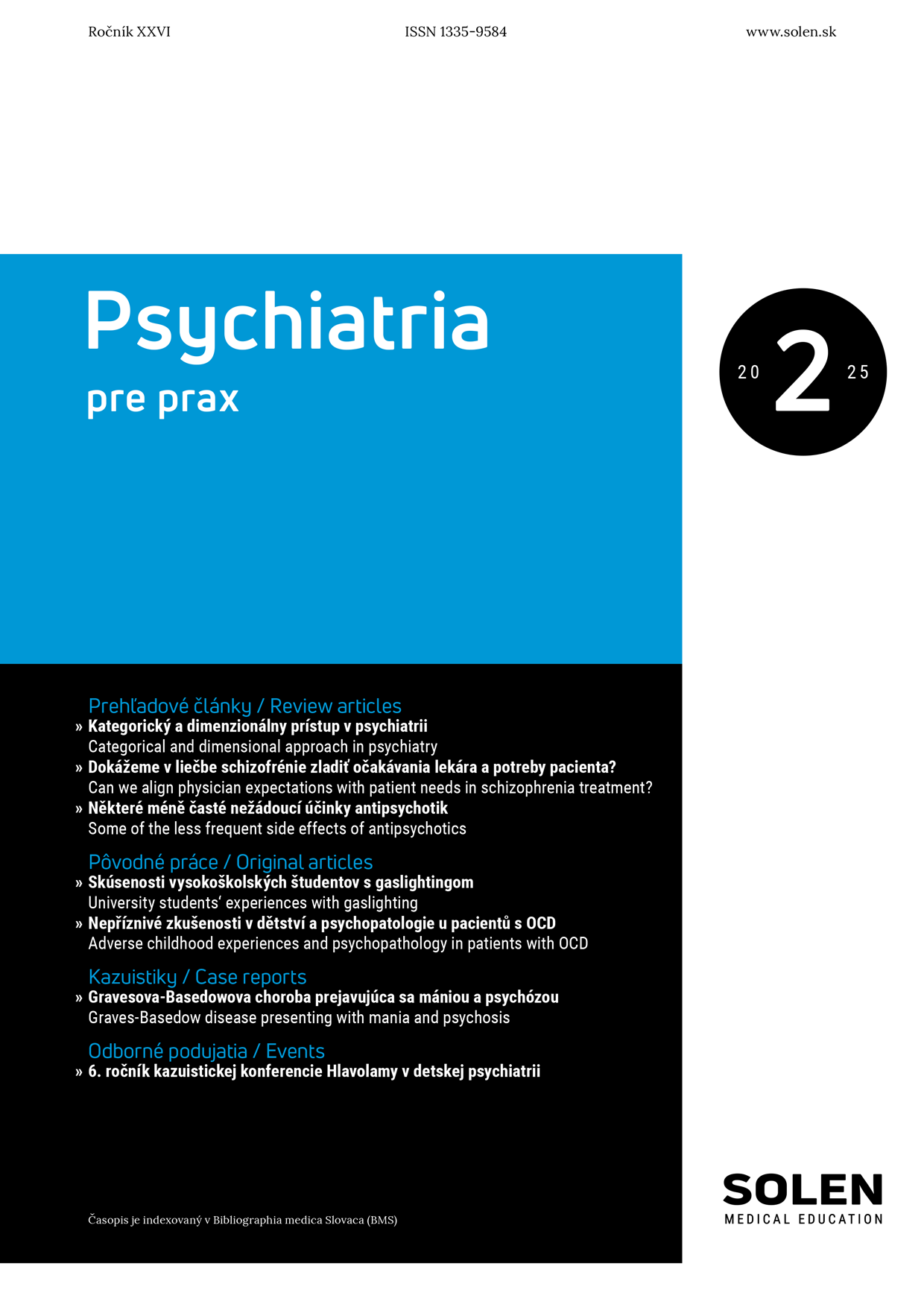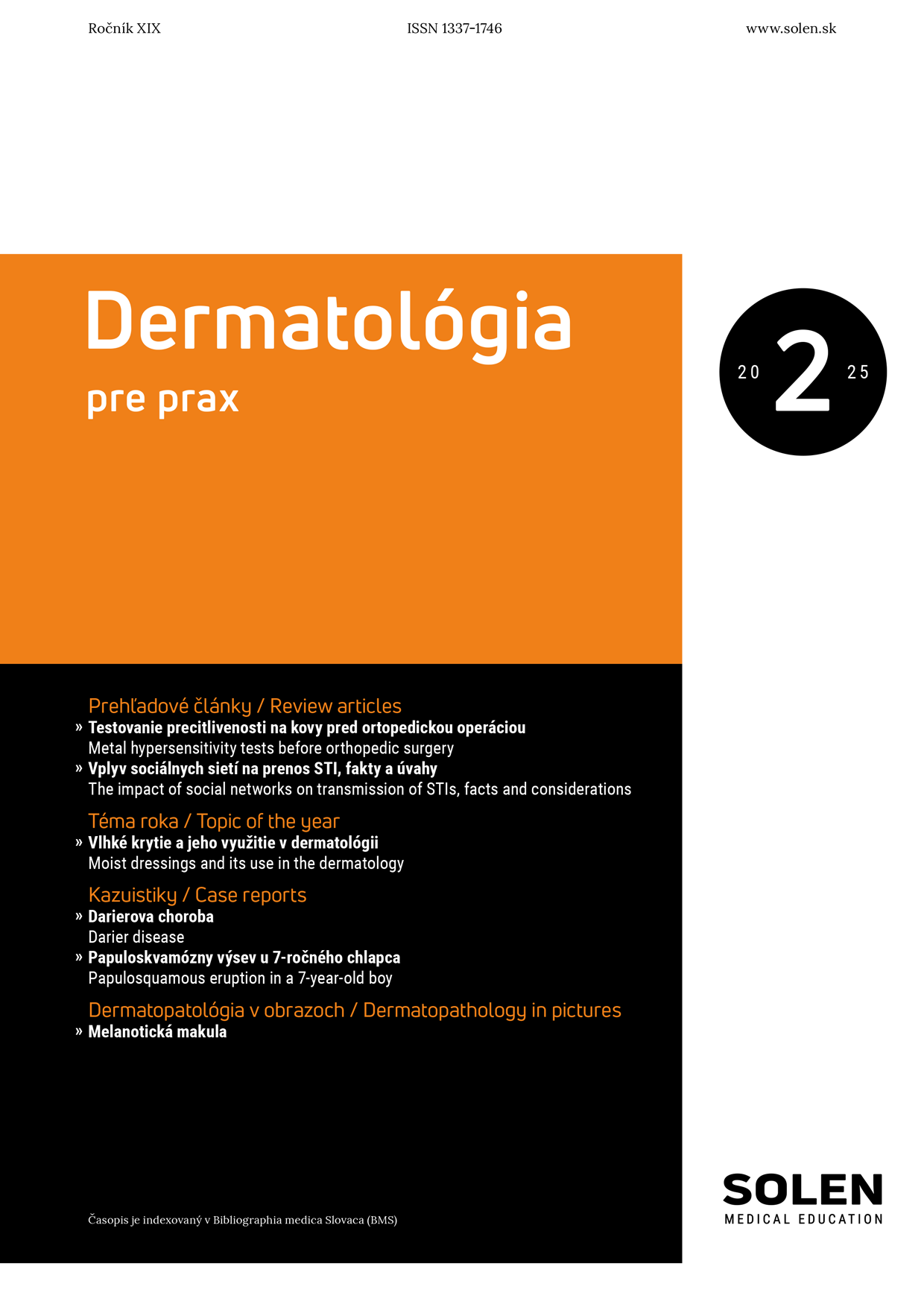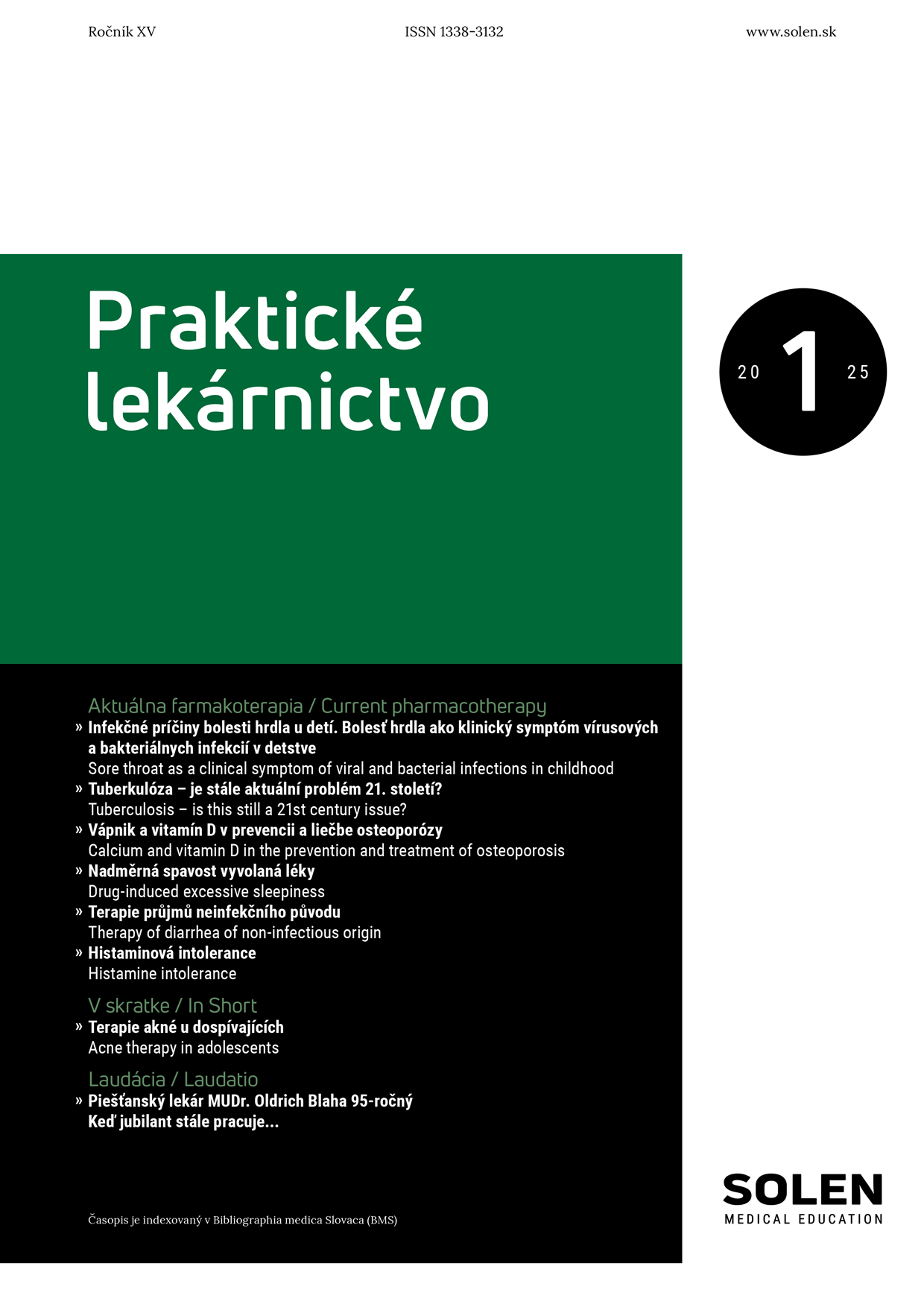Via practica 3/2012
Pharmacotherapy of chronic forms of ischemic limb disease according to current guidelines
Ischemic disease of lower limbs is a serious disorder caused mainly by atherosclerosis and atherotrombosis. Prevalence of the disease is high and it increases with an age, occurence of the disease indicates the high risk of cardiovascular and cerebrovascular morbidity and mortality. Authors summarize the findings of the evidence based pharmacotherapy of the disease according to current guidelines – American, Slovak and two Czech. Inhibitors of angiotensin-converting enzyme, statins and antiplatelet therapy belong to the basic pillars of the pharmacotherapy. According to the autors´opinion, there is a wrongly neglected antiplatelet drug – ticlopidine which has proved the reduction of cardiovascular morbidity and all-caused mortality of the patients with ischemic disease of lower limbs. Ischemic disease of lower limbs is frequently associated with hypertension, diabetes mellitus and dyslipidemia; the authors discuss possibilities and aims of the therapy of such associated diseases. The alternative of the revascular performance because of the critical limb ischemia is the therapy with prostanoids, furthermore the antiplatelet therapy and the therapy of analgetics and antidepressives are recommended. The most evidences testify for cilostazol from vasoactive drugs. The fruitfulness of withdrawal from dependence on tobacco can be increased by the pharmacotherapy with substitutes of nicotine, varenicline and bupropion.
Keywords: ischemic disease of lower limbs, angiotensin converting enzyme inhibitors, statins, antiplatelet therapy, ticlopidine, hypertension, diabetes mellitus, dyslipidemia, critical limb ischemia, vasoactive therapy, dependence on tobacco.


